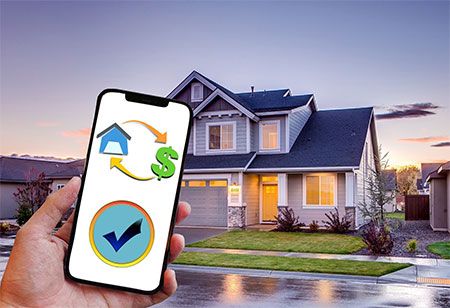
What You Should Know Before Refinansiering Your Mortgage in 2024

 Refinancing involves taking out a new loan for the amount remaining on your existing mortgage loans, typically at a lower interest rate and mo- nthly payment amount, offering several advan- tages including lower monthly payments and overall costs of financing the loan.
Refinancing involves taking out a new loan for the amount remaining on your existing mortgage loans, typically at a lower interest rate and mo- nthly payment amount, offering several advan- tages including lower monthly payments and overall costs of financing the loan.
Refinancing a Home Loan
As interest rates become lower, many borrowers look into refinancing their mortgage. By taking advantage of lower rates and saving money in monthly payments or refinancing to get a shorter term to reduce total interest expense, refinancing will replace an existing debt with one with different repayment terms and conditions - pro- viding savings when interest rates are at historic lows.
Underwriting, or the review process for refinance mortgage applications, involves reviewing a borrower's financial data in order to evaluate whether they qualify. This step typically lasts five to eight days or longer and homeowners can accelerate it by providing all documentation requested promptly as well as responding swiftly when asked for more by their loan processor.
Once approved for a refinance mortgage, borrowers are subject to closing costs such as loan origination fees, property appraisal costs and title insurance fees. Some lenders may also charge additional processing and underwriting expenses depending on the type of mortgage being refinanced. It is essential for borrowers to assess all of the costs involved with refinancing in order to ensure it will ultimately prove financially beneficial in the long run.
 Refinancing a Second Mortgage
Refinancing a Second Mortgage
A second mortgage allows you to borrow against the equity in your home, similar to home equity loans but in which a lump sum payment is received instead of access to an open line of credit. Lenders generally offer second mortgage loans at reduced interest rates than other debts because your home serves as collateral - plus all interest paid on it is tax-deductible!
Your second mortgage funds can be used for nearly anything, though home improvements or major purchases tend to be popular uses for these funds. Keep in mind, however, that borrowing this money counts as debt; and therefore will need to be paid back through your monthly mortgage payment.
For greater flexibility, consider applying for a home equity line of credit. It provides homeowners with an ideal way to tap their equity quickly while offering variable interest rates that adjust according to current market rates.
Piggyback mortgages offer another form of secondary loan option that can help borrowers avoid private mortgage insurance (PMI), which can add hundreds to monthly mortgage payments. When considering this loan option, it may be beneficial to combine both loans into one when closing day comes around.
 Refinancing a Home Equity Loan
Refinancing a Home Equity Loan
No matter your financial need - from unexpected expenses and savings goals to debt payoff, tapping home equity may be a cost-effective solution. Just ensure it fits within both short- and long-term budget plans like these - https://besterefinansiering.no - for maximum flexibility. Other alternatives could be charging large expenses on credit cards or taking out personal loans that don't use collateral such as home ownership as security.
Home equity loans are second mortgages that use the value of your home as collateral, pro- viding access to any equity built up through paying down mortgages or increases in property values over time. Interest rates on this type of loan tend to be considerably less than traditional mortgage rates and comparable personal or credit card loans.
Choose between a standard home equity loan or home equity line of credit (HELOC). A HELOC allows access to your equity at any time during its borrowing period; once this period concludes and repayment commences, monthly payments consisting of both principal and interest will become due.
To qualify for a refinancing loan, you'll need a minimum of 20 percent equity in your home and an FICO(r) score in the low 600s or better. A strong debt-to-income ratio will also help. Your new lender will likely also require an appraisal as well as charging application and document preparation fees along with points - where each point equals one percent of total loan amount.
 Refinancing a Commercial Loan
Refinancing a Commercial Loan
Refinancing commercial property loans is a complex financial decision. To make an informed decision, it's essential to understand all of the types, requirements, interest rates, fees involved as well as their impact on financial stability and cash flow for both business and individual owners.
Traditional commercial mortgage refinancing involves replacing an existing commercial loan with one offering more advantageous terms. These may include lower interest rates or longer repayment periods - ideal for businesses looking to reduce monthly mortgage payments or ex- penses.
Commercial cash-out refinancing allows real estate owners to tap their equity by taking out a new one that exceeds the current mortgage balance. It is only an option for properties with significant equity; lenders usually require that they generate enough income in order to cover their debt service coverage ratio (DSCR).
Interest-only refinancing is another type of commercial refinance loan available, enabling borrowers to secure loans that pay only interest on outstanding principal, thus lowering monthly payments and the overall cost. Borrowers must, however, be able to afford these payments without draining their cash reserves.
 Prior to applying for commercial loan refinancing, it is crucial that one takes time to analyze current market conditions and ensure their property has adequate value. Lenders typically require exten- sive documentation when reviewing loan app- lications - financial statements, tax returns, rent rolls and property insurance documents are just some of them - along with potential savings before committing to refinance options.
Prior to applying for commercial loan refinancing, it is crucial that one takes time to analyze current market conditions and ensure their property has adequate value. Lenders typically require exten- sive documentation when reviewing loan app- lications - financial statements, tax returns, rent rolls and property insurance documents are just some of them - along with potential savings before committing to refinance options.
Refinancing commercial properties can bring many advantages, including lower monthly pay- ments and an increase in cash flow. Before refinancing, however, it is vital to understand all of the available loans, requirements, rates, fees, and closing costs before making a decision. Furthermore, tax ramifications should be care- fully considered, which you can learn about here; to make an informed decision consult legal or financial professionals to ensure your loan structure aligns with both long-term goals as well as relevant regulations.
It can be an excellent way to utilize the equity built up in your house and leverage its value, either to lower monthly payments or make improvements. Refinancing can also help reduce high-interest debt payments or overall borrowing costs by switching an adjustable-rate mortgage into a fixed-rate option.